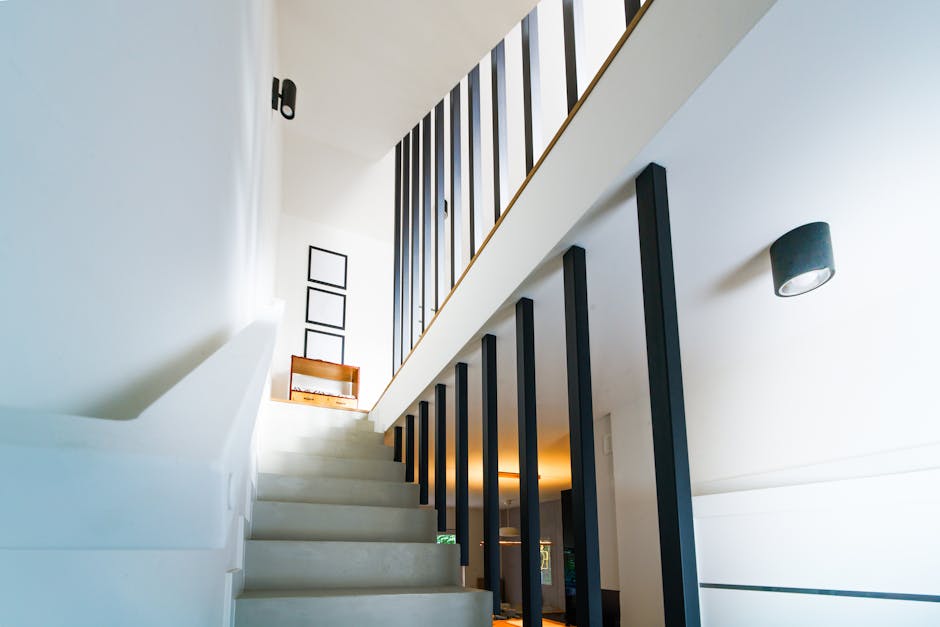Split-level living rooms, with their inherent architectural character and multi-tiered design, present a unique decorating challenge. They’re not quite open-concept, not quite traditional – existing in a space between. The very steps that define them can be blessings or curses, depending on how you approach their décor. To truly maximize the potential of a split-level living room, a thoughtful strategy is crucial. You want to unify the spaces while celebrating their individuality. It’s a dance of cohesion and distinction; the goal being a living room that feels both connected and intentionally defined. We will explore some ideas that you may find useful for your space.
Understanding Your Split-Level Living Room’s Architecture
Before you even think about paint colors or furniture placement, take a good long look at your space. What are the levels exactly? Are they dramatically different in height, or are they subtle changes? Are the stairs open, closed, carpeted, or wooden? The answers to these questions will be the foundation of your design decisions. Consider these factors:
- Natural Light: Where does the light come from and how does it travel across the different levels? Does one level get significantly more sun than another? This will impact your paint choices. Lighter colors can brighten dimmer areas, while darker colors can add depth to sun-drenched spaces.
- Flow and Function: How do people actually use the living room? Do they congregate mainly on one level? How do they move between them? Make sure your furniture arrangement facilitates natural traffic flow and enhances the room’s usability. Try to avoid placing furniture in a way that blocks the steps. That would create both aesthetic and practical issues.
- Architectural Style: Does your house lean towards mid-century modern, traditional, contemporary, or something else entirely? Your décor should complement the existing architectural elements, not fight against them. The last thing you want is a clash of styles that leaves the space feeling disjointed.
Color Palettes for Split-Level Harmony
Color is your secret weapon in unifying a split-level living room. The key is to create a cohesive flow without making the space feel monotonous. I suggest considering an analogous color scheme – colors that are next to each other on the color wheel. For example, blues, greens, and teals can work beautifully together.
Another approach is to use a monochromatic scheme, employing different shades and tints of a single color. Think a light beige on the upper level, a medium beige on the main level, and a slightly darker beige on the lower level. This creates a subtle sense of depth and continuity.
Here’s a breakdown:
- Upper Level: Consider lighter, airier colors to maximize natural light and make the space feel larger.
- Main Level: Use a grounding color that complements both the upper and lower levels. This is your anchor.
- Lower Level: You can go a bit darker or bolder on the lower level to create a cozy and intimate feel.
Don’t forget the power of accent colors! These can be used to create focal points and tie the different levels together. Repeat the same accent color in pillows, artwork, and accessories on each level to create a sense of visual connection.
Furniture Placement: Creating Zones and Encouraging Flow
Furniture arrangement is super important when working with multiple levels. Each level should have a clear purpose. You might have a reading nook on one level, a conversation area on another, and an entertainment center on the third.
Here are some tips to remember when you’re picking furniture:
- Scale is Key: Don’t overcrowd the space with oversized furniture. Choose pieces that are proportionate to the size of each level. Smaller, lighter furniture can work wonders in making a smaller level feel more spacious.
- Define the Zones: Use area rugs to visually separate the different levels. A rug can anchor a seating area and create a sense of definition.
- Conversation Areas: Arrange furniture in a way that encourages conversation and interaction. Avoid lining up furniture against the walls. Instead, create cozy seating arrangements that face each other.
- Visual Connection: Consider the sightlines between the different levels. Make sure you can see from one level to another. This helps to create a sense of connection.
Dealing with the Steps: A Focal Point or a Necessary Evil?
The steps themselves can be a design opportunity. Instead of treating them as an obstacle, embrace them as a unique architectural feature. Here are a few ideas:
- Stair Runners: A stair runner can add color, texture, and pattern to the steps. It can also help to protect the stairs from wear and tear. Choose a runner that complements the overall color scheme of the living room.
- Paint or Stain: Consider painting or staining the steps to match the flooring or walls. This can create a cohesive look. You could also paint each step a different color for a more playful effect.
- Lighting: Add lighting to the steps to make them safer and more visually appealing. You could install recessed lighting, sconces, or even LED strip lights.
- Artwork or Decor: Hang artwork along the staircase or place decorative objects on the steps. This can add personality and visual interest.
Lighting Strategies for Levels
Lighting is what can make or break a split-level living room. Due to the multiple levels, you need to layer your lighting to create a warm and inviting atmosphere. Consider a combination of ambient, task, and accent lighting.
- Ambient Lighting: Provides overall illumination for the space. Recessed lighting, ceiling fixtures, and chandeliers all fall into this category.
- Task Lighting: Provides focused light for specific activities, such as reading or working. Table lamps, floor lamps, and desk lamps are examples of task lighting.
- Accent Lighting: Used to highlight architectural features, artwork, or other decorative elements. Track lighting, spotlights, and sconces can be used as accent lighting.
Ensure the lighting is consistent across levels. This doesn’t mean every light fixture has to match, but there should be a visual connection in style and color temperature.
Accessories and Details: Tying It All Together
Accessories are the finishing touches that can truly bring a split-level living room together. Here are a few ideas:
- Artwork: Choose artwork that complements the color scheme and style of the living room. Hang artwork on the walls to create focal points.
- Pillows and Throws: Add pillows and throws to the sofas and chairs. These can add color, texture, and comfort to the space.
- Rugs: Use area rugs to define the different levels and create a sense of warmth.
- Plants: Add plants to the living room to bring life and freshness to the space. Plants can also help to purify the air.
- Personal Touches: Don’t forget to add personal touches to the living room, such as family photos, souvenirs, and other meaningful items. These will make the space feel more like home.
Common Mistakes to Avoid
Even with the best intentions, there are some common mistakes that people make when decorating split-level living rooms.
- Ignoring the Architecture: Fighting against the architecture of the house instead of embracing it.
- Overcrowding the Space: Trying to cram too much furniture into the living room.
- Neglecting the Steps: Failing to address the steps as a design element.
- Poor Lighting: Not layering the lighting properly.
- Lack of Cohesion: Failing to create a cohesive look between the different levels.
- Forgetting the Function: Focusing too much on aesthetics and not enough on functionality.
Split-Level Living Room Styles: Some Great Ideas
There are many styles that could work well with a split-level living room. The following are some of the ones that work best.
- Mid-Century Modern: Clean lines, organic shapes, and a focus on functionality. This style works well with the architectural bones of many split-level homes. It is also easy to achieve if you are patient.
- Contemporary: A focus on simplicity, minimalism, and clean lines. This style is perfect for creating a sleek and modern look. It also is easy to maintain, compared to more luxurious styles.
- Bohemian: A free-spirited and eclectic style that embraces color, texture, and pattern. This style is perfect for creating a cozy and inviting space. It’s also a perfect choice for those who love travel.
- Traditional: A classic and timeless style that features rich colors, ornate details, and comfortable furniture. This style is perfect for creating a warm and inviting space. Do remember it can be expensive to implement!
Budget-Friendly Decorating Tips
You don’t have to spend a fortune to decorate a split-level living room. Here are a few budget-friendly tips:
- Shop Secondhand: Check out thrift stores, flea markets, and online marketplaces for affordable furniture and accessories.
- DIY Projects: Get creative and make your own decorations. There are many tutorials available online.
- Repurpose Existing Items: Look around your house for items that you can repurpose. For example, an old ladder could be turned into a bookshelf.
- Paint is Your Friend: A fresh coat of paint can do wonders for a space.
- Focus on Key Pieces: Instead of buying a lot of cheap furniture, invest in a few high-quality pieces that you really love.
Decorating a split-level living room is quite a challenge, it’s an enjoyable process that allows you to express your creativity and create a space that you truly love. By understanding the architecture, choosing the right color palette, arranging the furniture strategically, and paying attention to the details, you can create a living room that is both beautiful and functional. With a little patience and creativity, you can transform your split-level living room into a space that you’ll be proud to call home.
Last modified: June 14, 2025



